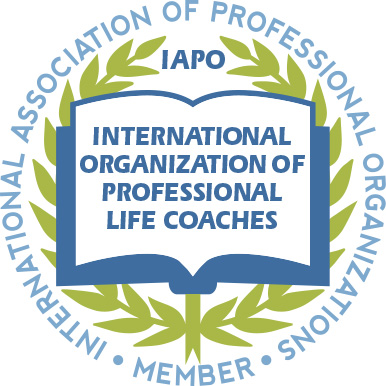We hear the term all the time: “thought leadership”. And we know it as a powerful force that shapes industries, sparks conversations, inspires change, and sets certain people apart. But what exactly does it mean to be a thought leader?
Beyond the buzzword lies a profound commitment to critical thinking, driving progress, stimulating innovation, influencing opinions, and igniting meaningful dialogue.
Today, we discuss the essence of thought leadership and explore what it takes to become a genuine thought leader.
What Does it Mean to Be a Thought Leader?
What if you could shape how people think, make decisions, or solve problems?
In simple terms, being a thought leader involves becoming an authority in your field and influencing others with your insights.
It brings significant benefits, like enhanced credibility and expanded networks. But it also comes with challenges and responsibilities. These include staying relevant and maintaining authenticity.

What is Thought Leadership?
At its core, thought leadership is not just about sharing ideas, skills or knowledge. It’s about challenging the status quo. Being a thought leader means you provoke others to think and that you offer valuable insights. Insights that have the potential to shape the future.
Thought leaders have a deep understanding of their field. They have a passion for innovation and a relentless drive to effect positive change. But they are not simply experts, they are also visionaries.
They are disruptors and catalysts for transformation. They shape trends and drive conversations that resonate far beyond their immediate sphere of influence.
How to Be a Thought Leader: Define Your Niche
To become a thought leader, clarity is key. You must ask yourself, “What unique perspective can I offer?”
Your value proposition could be based on personal experiences, unique skills, or specialized knowledge that others lack.
Understanding your audience is also critical. Conduct surveys, read industry reports, and listen carefully to speakers and to conversations on social media.
This can help you identify an area you would like to learn more about. You can explore solutions for pain points. You can also find answers to difficult questions.
Narrowing your focus to one specialized area and dive deeply into your topic.
To help fuel your thought process, consider the following questions:
- What general area are you interested in learning more about?
- Which niches have you been exposed to during the course of your career that have sparked your interest?
- Where do you have the most relevant experience?
- What focus areas within your industry or profession are emerging and would benefit from having new thought leaders?
Example: Sustainability is a very broad field. One specialized area of expertise within the field is Sustainable Supply Chain Management.
Supply chain professionals focus on developing environmentally friendly practices that reduce environmental impact and waste and promote ethical sourcing. They work to optimize the flow of goods, services, and information in a way that is both economically viable and ecologically sustainable.
Be ready to invest the time and energy required to become a true expert.
Thought Leadership: How to Build Credibility and Authority
One way to build credibility is by sharing your unique insights. Write articles, speak at events, or host webinars.
Your backstory matters. Highlight your qualifications, experiences, and any notable achievements. Share success stories to illustrate your expertise in action.
Your online image is essential. Create a professional website, keep your social media profiles updated, and engage regularly with your audience.
Create High-Quality Content as a Thought Leader
Establish a list of core topics central to your expertise. These pillars will guide your content creation, ensuring you consistently provide valuable information to your audience.

Different content formats attract different audiences. Mix blog posts with videos and podcasts to reach a broader range of people. Each format offers a unique way to engage and inform.
To enhance visibility, apply SEO strategies. Use relevant keywords throughout your content. Ensure readability by using headings, bullet points, and images to break up text.
Engage and Build Your Community as a Thought Leader
Connect with other professionals in your field. Attend conferences, join forums, and participate in online discussions. Collaboration enhances visibility and credibility.
Engage with your audience. Respond to comments, answer questions, and show appreciation for feedback. This builds trust and strengthens community ties.
Social media is a powerful tool for reaching your audience. Identify where your audience spends their time and create tailored content that resonates with them.
Qualities of a Thought Leader
True leaders exhibit a combination of key qualities that set them apart in a crowded landscape of voices and opinions.
They are visionary thinkers who anticipate trends, embrace challenges, and inspire others to think differently.
They possess a strong sense of authenticity, integrity, and transparency, engaging with their audience in a genuine and relatable manner.
Also, they practice continuous learning, constantly seeking new knowledge and insights to stay ahead of the curve and remain at the forefront of their industry.

Examples of Thought Leaders
Renowned for their groundbreaking contributions and visionary insights, three iconic individuals have left an indelible mark on their respective fields.
- Elon Musk, the innovative entrepreneur behind SpaceX and Tesla, embodies a relentless pursuit of technological advancement and sustainable solutions, revolutionizing industries and challenging conventional thinking.
- Brené Brown, a pioneering storyteller and researcher, has redefined the discourse around vulnerability, courage, and empathy, inspiring countless individuals to embrace authenticity and cultivate resilience.
- Malala Yousafzai, the fearless advocate for girls’ education and Nobel laureate, exemplifies unwavering bravery and unwavering dedication to justice, using her platform to amplify the voices of the marginalized and advance the cause of equality worldwide.
Becoming a Thought Leader
To truly become a thought leader, one must be willing to take risks, challenge conventions, and stand out in a sea of voices.
It also requires a commitment to lifelong learning, a willingness to share knowledge generously, and a genuine desire to make a positive impact on the world.
Becoming a genuine thought leader also requires humility. We have to be welcome feedback and engagement that may involve having our point of view challenged. True thought leaders engage in productive conversations that may ultimately either refine or refute original ideas or frameworks.
What is Thought Leadership?
Thought leadership is not merely a label—it is a calling, a responsibility, and a privilege.
Becoming a leader is an ongoing process. Define your niche, build credibility, and engage with your community.
To be a true thought leader is to embody the values of innovation, integrity, and influence, leveraging one’s expertise to drive meaningful change and inspire others to reach new heights of achievement.
Thank you as always for reading.
If you haven’t yet subscribed, please visit KindCompassCoach and enter your email address so you never miss a post.
As Amazon Associates, we may receive a small commission (at no cost to you) for items purchased through links in this post.

Joan Senio is the founder of KindCompassCoach. Joan’s career includes clinical healthcare plus 20+ years as an executive in a nationwide health care system and 15 years as a consultant. The common threads throughout Joan’s personal and professional life are a commitment to non-profit organizations, mental health, compassionate coaching, professional development and servant leadership. Joan has had the privilege of mentoring early and mid-career professionals as well as current and future executives and leaders. She is a member of the International Organization of Life Coaches, serves as a thought-leader for KuelLife.com and is also a regular contributor to PsychReg and Sixty and Me. You can read more about Joan here: Joan Senio.





No Responses